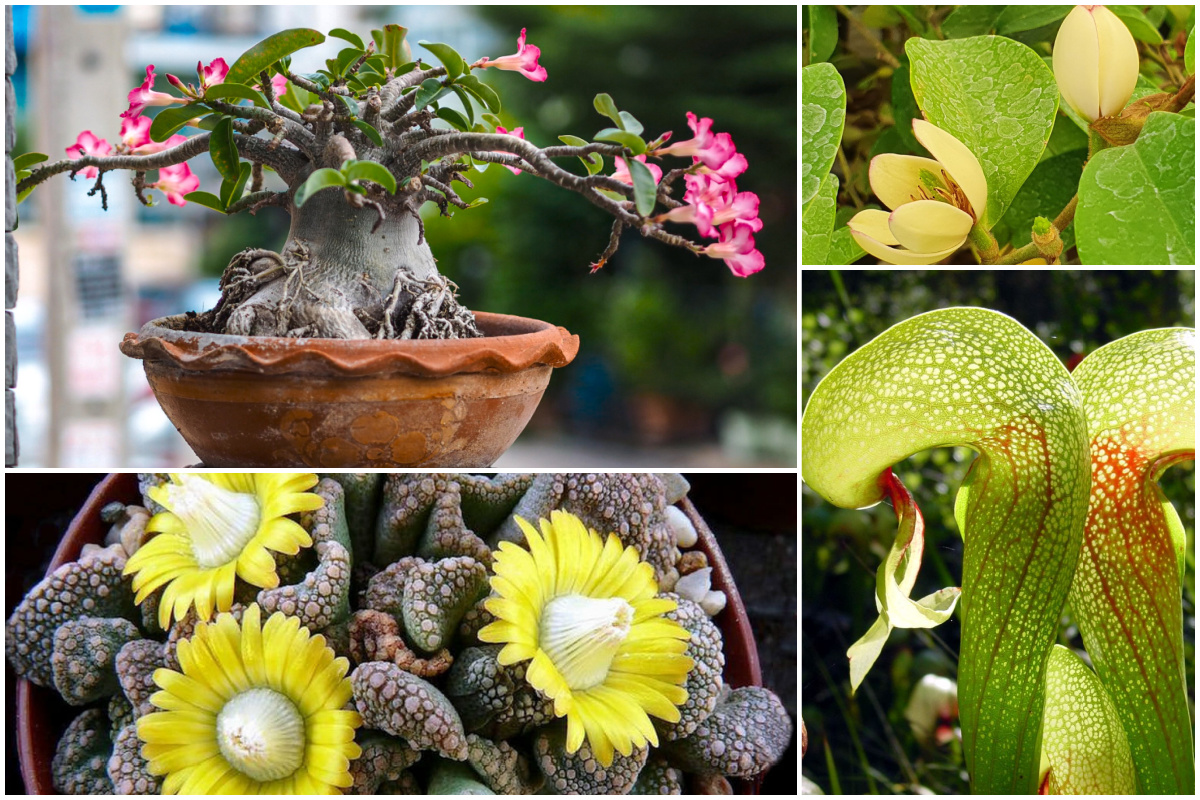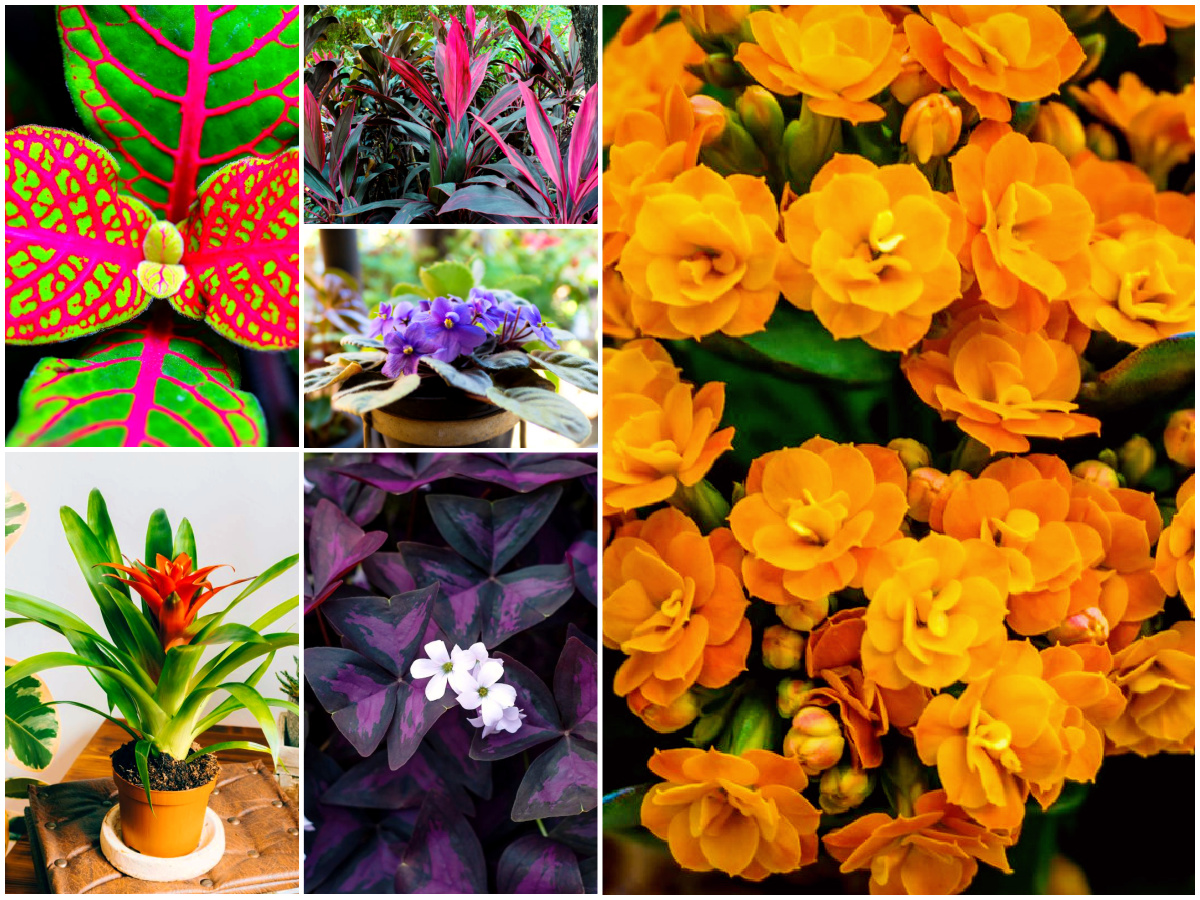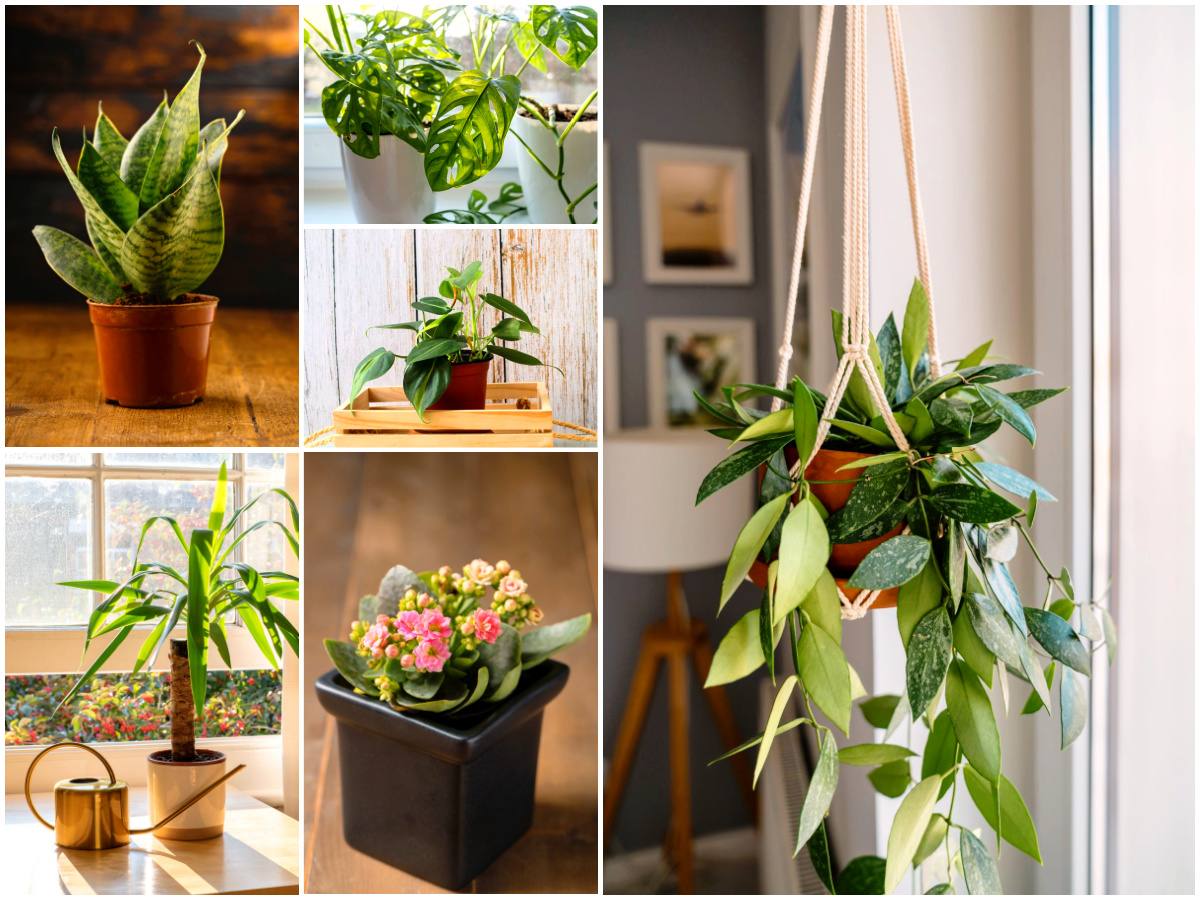There are many reasons to set up a plant terrarium: they’re decorative, make a fun project and provide the humidity some of our favorite houseplants crave. Not just any plant can go in a terrarium, though.
Although succulents are a popular terrarium choice they are actually one of the worst options you can find. They will usually quickly wither in such a humid environment.
So which plants do well in a terrarium? Keep reading for a list of 6 ideal terrarium plants!
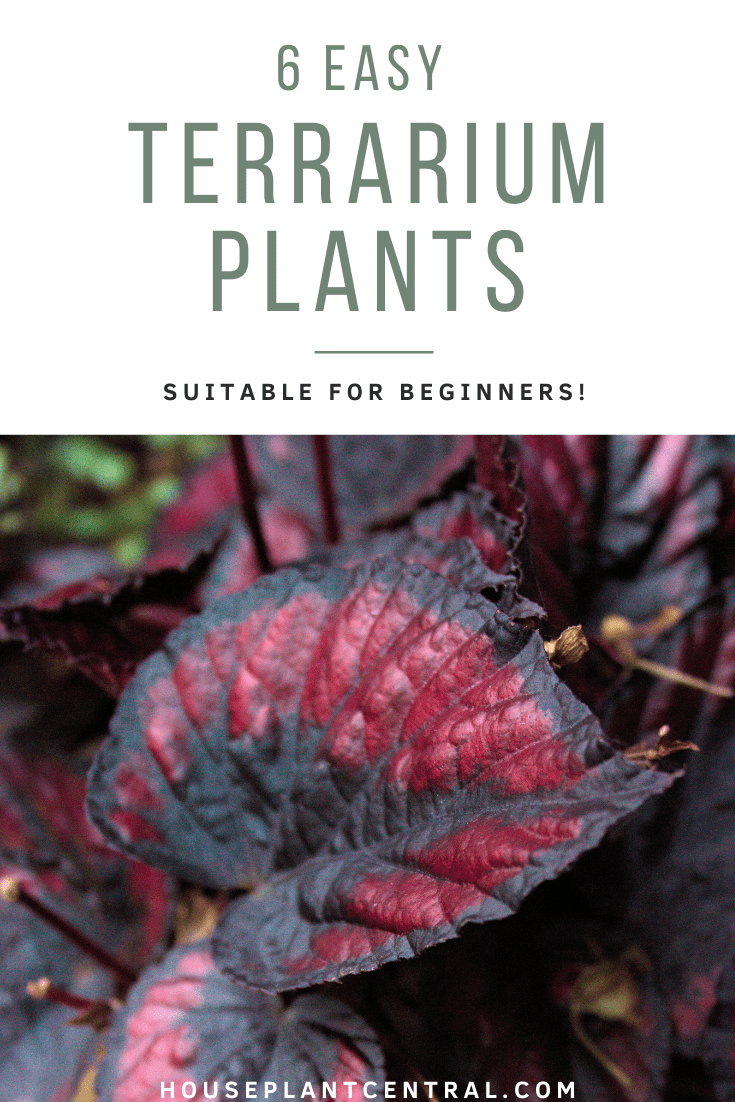
Cryptanthus (Earth star)
Cryptanthus, also known as Earth stars, are a type of terrestrial Bromeliad that naturally occurs on Brazilian rainforest floors. They are available in an endless range of different colors, leaf shapes and patterns and will even change color depending on the amount of light they are provided with.
Like any rainforest plant, Cryptanthus appreciates plenty of moisture, which makes it the perfect option for a plant terrarium. Just be sure to never allow water to stand in the container for too long. Although these Bromeliads love being kept moist, they still don’t appreciate wet feet and soaked soil will eventually lead to root rot.
In a terrarium you likely don’t have to water much. Give the plant(s) a drink when the top of the soil is starting to dry.
| Difficulty level | Easy |
| Lighting needs | Medium |
| Adult size | Small |
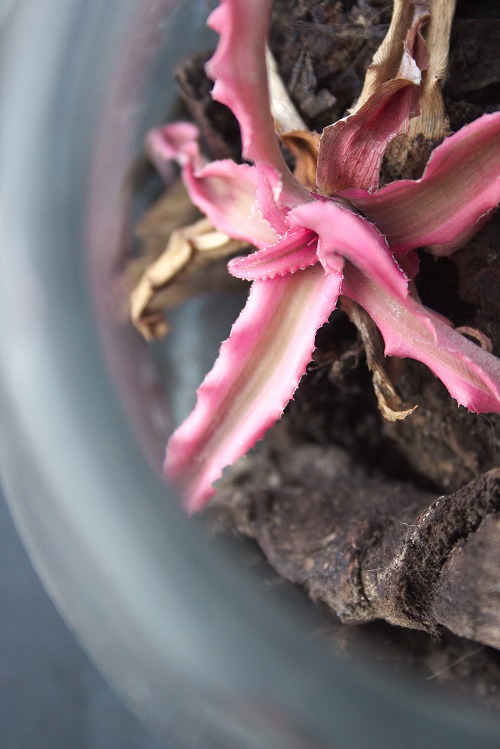
Fittonia (nerve plant)
Another terrarium classic, Fittonia is appreciated for its funky and sometimes almost blindingly bright leaf pattern, which have earned it its common name. The leaf veins on this plant actually vary from light green to neon pink! A great option if you’re looking for a pop of color in your plant terrarium.
Like Cryptanthus, Fittonia naturally occurs on the rainforest floors of South America and appreciates similar conditions in the home. So keep it moist but not wet and water when the top of the soil starts to dry.
Do keep in mind that this plant doesn’t appreciate being in an entirely closed off container: some fresh air is necessary.
| Difficulty level | Medium |
| Lighting needs | Medium |
| Adult size | Small |
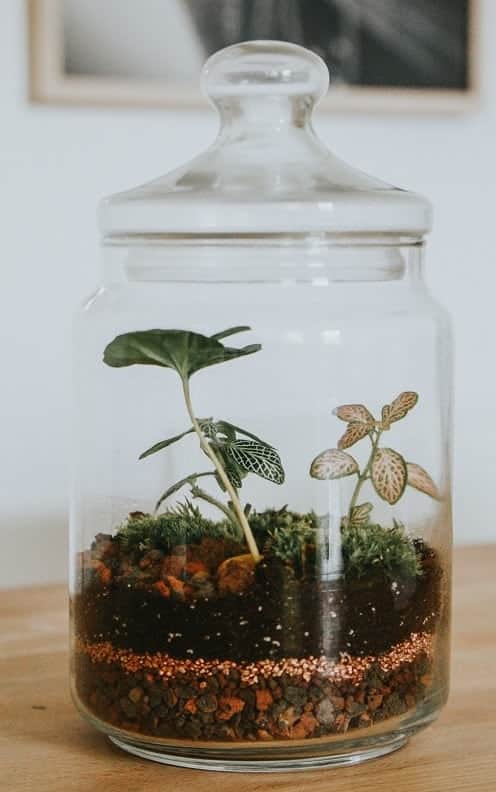
Phlebodium aureum (blue star fern)
Phlebodium aureum, or blue star fern, seems to be gaining popularity in the plant hobby fast. Its unusual appearance with blue-green paw-shaped elongated fronds makes it a great choice if you have a slightly larger plant terrarium.
Like the plants already discussed, this species is naturally found in the tropical rainforests of South America, although it doesn’t occur on forest floors. This fern is an epiphyte, meaning it grows on other plants and trees. This means it won’t do well in regular potting media and instead needs something a little looser, like orchid bark.
In terrariums, you can combine this species with other moisture loving epiphytes.
| Difficulty level | Medium |
| Lighting needs | Medium |
| Adult size | Medium |
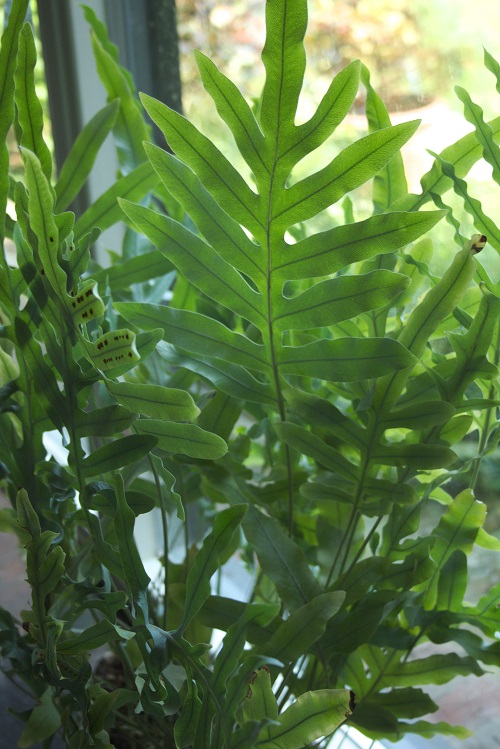
Peperomia caperata
Plants from the Peperomia genus are appreciated for their small size, easy care and decorative foliage. This is no different for Peperomia caperata, whose leaves can vary from dark green to red or purple and works well for small terrariums due to its limited size.
Another South American rainforest inhabitant, this plant appreciates plenty of moisture but is less appreciative of moist soil than the other specimens on this list. Its slightly succulent-like leaves can store some water, which means the soil should be left to dry out a bit more between waterings.
Use a light, airy soil to keep your Peperomia caperata happy.
You can find a full Peperomia caperata caresheet here.
| Difficulty level | Easy |
| Lighting needs | Medium |
| Adult size | Small |
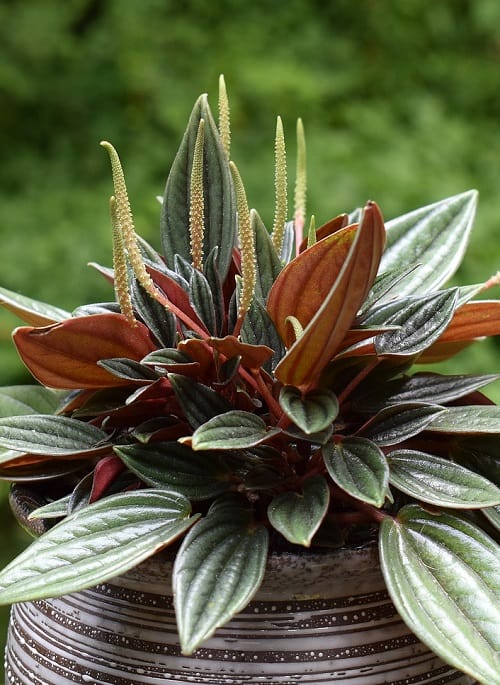
Hypoestes phyllostachya (polka dot plant)
Like Fittonia, Hypoestes is appreciated for its interesting leaf colors and patterns. The polka-dotted leaves feature colored splotches which can vary from a silvery green to bright pink, which makes it a great option if you’re looking for a pop of color.
Like Peperomia, Hypoestes appreciates plenty of air moisture but is not a big fan of very moist soil, which could make the two plants a good combination. Let the top part of the soil dry out before adding more water and be sure to only use it in an open terrarium that allows some water to evaporate and fresh air to enter.
Provide bright, indirect light to make sure the leaves don’t lose their spectacular colors.
You can buy a Hypoestes online here and read more in the full guide on polka dot plant care.
| Difficulty level | Medium |
| Lighting needs | Medium |
| Adult size | Small |
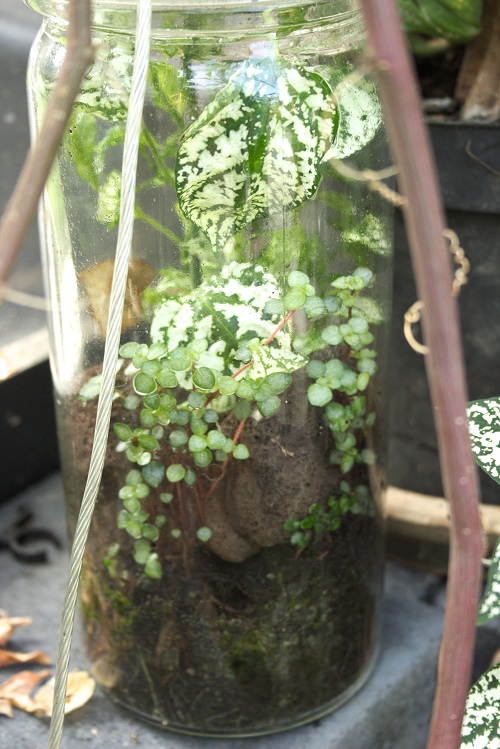
Rex Begonia
Yet another plant appreciated for its wide variety of spectacularly colored (and in this case, interestingly shaped) foliage, Rex Begonias appreciate plenty of moisture and are therefore a great terrarium option. Because there are so many cultivars available, a bunch of different looking Begonias planted in a large plant terrarium together make for a wonderful display.
One aspect of Rex Begonia care that can be difficult is figuring out a proper watering schedule. These plants can be a little fussy when it comes to watering and need plenty of moisture but react very badly to wet feet.
Let the top of the soil dry out before watering again. The plant will tell you itself if you’ve waited too long by letting its leaves droop, which can easily be fixed with a few good sips of water.
You can find a full Rex Begonia caresheet here.
| Difficulty level | Medium |
| Lighting needs | Medium |
| Adult size | Medium |
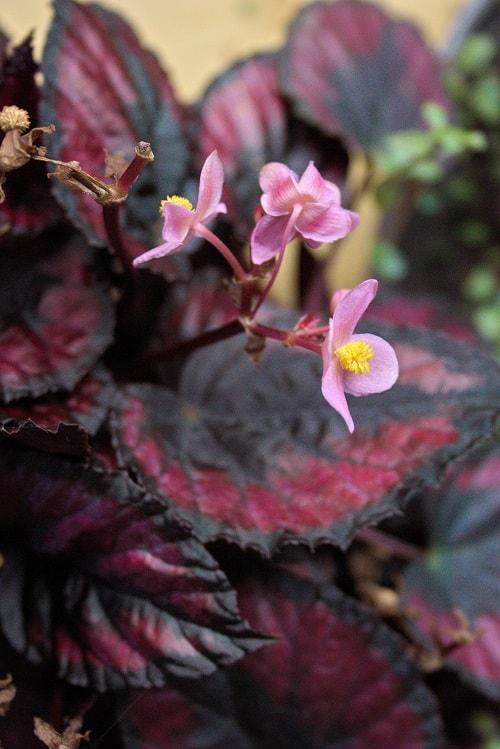
Cover photo: terrain by agizienski.

